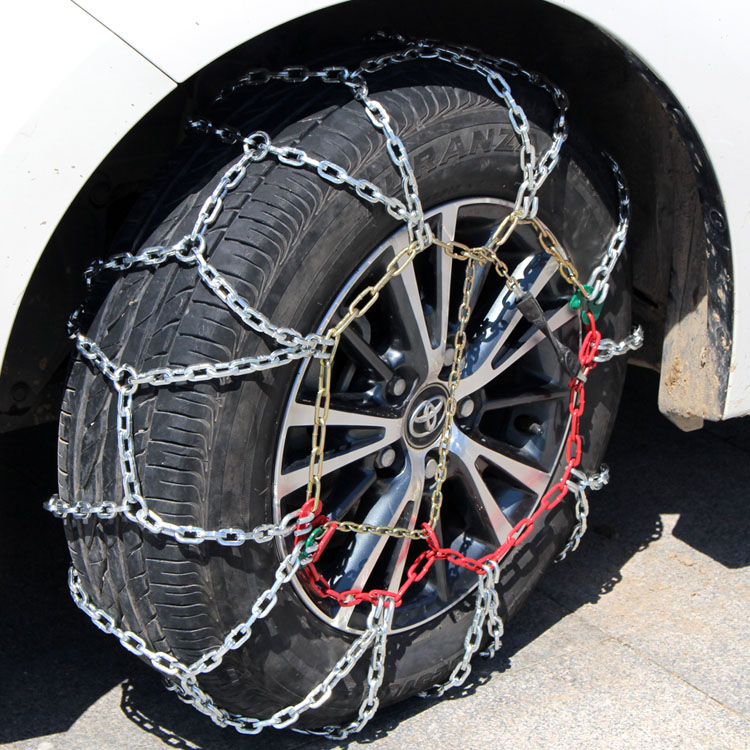START HERE » TCR Chain Finder
Select Size10-16.5 10-16.5 SkidSteer 10-17.5 10-22.5 10.00-15 10.00-15TR 10.00-16.5 10.00-20 10.00-22 10.25x3.25 10.5/80-18 10/10.5x2.75 10x3.50 11-17.5 11-22.5 11-24.5 11.00-15 11.00-15TR 11.00-16 11.00-20 11.00-22 11.2-16 11.2-20 11.2-24 11.2-28 11.2-32 11.2-34 11.2-36 11.2-38 11.2-44 11L-16 12-22.5 12-24.5 12.00-15 12.00-16.5 12.00-16.5 Skidsteer 12.00-20 12.00-24 12.25x3.50x6 12.4-16 12.4-20 12.4-24 12.4-28 12.4-36 12.4-38 12.4-40 12.4-42 12.5-20 12.5-22.5 12.5/80-18 12x12 12x3 12x3.50x6 13.00-24 13.00-25 13.50-16.1 13.6-16 13.6-24 13.6-26 13.6-28 13.6-36 13.6-38 13.9-36 13/80-20 13x4.00-6 13x5x6 13x6.50-6 14-17.5 14-17.5 Skidsteer 14.00-20 14.00-21 14.00-24 14.00-25 14.9-24 14.9-26 14.9-28 14. 5 225/70-19.5 225/70-22.5 225/75-14 225/75-15 225/75-16 225/75-17 22x10-12 22x10-8 22x10x10 22x10x9 22x11.00-8 22x11x10 22x11x8 22x11x9 22x12-8 22x8x11 22x9.00-8 22x9.50-12 23.1-26 23.1-30 23.1-34 23.5-25 23.5x8-11 235/35-19 235/45-17 235/50-17 235/50-18 235/55-16 235/55-17 235/60-15 235/60-17 235/60-18 235/65-17 235/65-18 235/70-14 235/70-15 235/70-16 235/70-17 235/75-15 235/75-16 235/75-17 235/75-17.5 235/80-16 235/80-17 235/80-22.5 235/85-16 23x10-12 23x10.50-12 23x10x10 23x11-10 23x7.50x12 23x8-10 23x8-11 23x8.50-12 23x8.50-14 23x9.50x12 24.5-32 240/45-15 245/35-20 245/40-17 245/40-18 245/45-16 245/45-17 245/50-15 245/50-16 245/50-17 245/55-16 245/55-17 245/60-14 245/65-15 245/65-17 245/70-15 245/70-16 245/70-17 245/70-17.5 245/70-19.5 245/75-15 245/75-16 245/75-17 245/75-22.5 245/85-16 24x10.50-12 24x10x11 24x11-11 24x11.00-12 24x11.5x10 24x11x10 24x11x8 24x11x9 24x12-10 24x12-12 24x13x12 24x13x9 24x8-11 24x8.00-12 24x8.00-14 24x8.50-12 24x8.50-14 24x9.50-12 24x9x11 24x9x12 250-15 255/40-17 255/40-18 255/45-15 255/45-18 255/55-14 255/55-17 255/55-18 255/60-14 255/60-17 255/60-18 255/65-15 255/65-16 255/65-17 255/70-15 255/70-16 255/70-17 255/70-18 255/70-22. 5 225/70-19.5 225/70-22.5 225/75-14 225/75-15 225/75-16 225/75-17 22x10-12 22x10-8 22x10x10 22x10x9 22x11.00-8 22x11x10 22x11x8 22x11x9 22x12-8 22x8x11 22x9.00-8 22x9.50-12 23.1-26 23.1-30 23.1-34 23.5-25 23.5x8-11 235/35-19 235/45-17 235/50-17 235/50-18 235/55-16 235/55-17 235/60-15 235/60-17 235/60-18 235/65-17 235/65-18 235/70-14 235/70-15 235/70-16 235/70-17 235/75-15 235/75-16 235/75-17 235/75-17.5 235/80-16 235/80-17 235/80-22.5 235/85-16 23x10-12 23x10.50-12 23x10x10 23x11-10 23x7.50x12 23x8-10 23x8-11 23x8.50-12 23x8.50-14 23x9.50x12 24.5-32 240/45-15 245/35-20 245/40-17 245/40-18 245/45-16 245/45-17 245/50-15 245/50-16 245/50-17 245/55-16 245/55-17 245/60-14 245/65-15 245/65-17 245/70-15 245/70-16 245/70-17 245/70-17.5 245/70-19.5 245/75-15 245/75-16 245/75-17 245/75-22.5 245/85-16 24x10.50-12 24x10x11 24x11-11 24x11.00-12 24x11.5x10 24x11x10 24x11x8 24x11x9 24x12-10 24x12-12 24x13x12 24x13x9 24x8-11 24x8.00-12 24x8.00-14 24x8.50-12 24x8.50-14 24x9.50-12 24x9x11 24x9x12 250-15 255/40-17 255/40-18 255/45-15 255/45-18 255/55-14 255/55-17 255/55-18 255/60-14 255/60-17 255/60-18 255/65-15 255/65-16 255/65-17 255/70-15 255/70-16 255/70-17 255/70-18 255/70-22.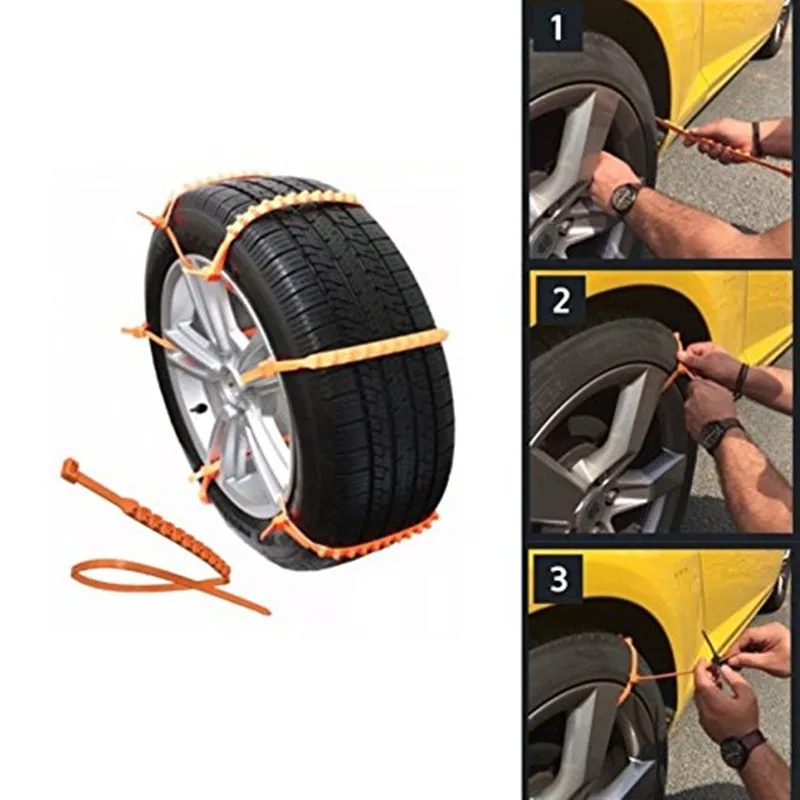 5 255/75-15 255/75-16 255/75-17 255/80-22.5 255/85-16 25x10-8 25x10x10 25x10x12 25x11x10 25x11x12 25x11x8 25x12x10 25x12x9 25x13-9 25x13.50-9 25x13.5x12 25x7.50-15 25x8-10 25x8-11 25x8.50-14 25x8x12 26.5-25 26.5-29 265/50-16 265/50-20 265/60-16 265/60-18 265/65-17 265/70-15 265/70-16 265/70-17 265/70-18 265/70-19.5 265/75-15 265/75-16 265/75-22.5 265/80-16 26x10-12 26x10-14 26x10.5x12 26x11-12 26x11-14 26x12-14 26x12.00-12 26x8-12 26x9-12 26x9-14 26x9.5-12 270/60-12 270/95-36 275/45-20 275/55-17 275/55-18 275/55-20 275/60-15 275/60-16 275/60-17 275/60-18 275/60-20 275/60HR17 275/65-16 275/65-17 275/65-18 275/70-16 275/70-17 275/70-18 275/70-22.5 275/80-22.5 275/80-24.5 27x10-14 27x10.50-15 27x10x12 27x11-12 27x11-14 27x12-14 27x12x12 27x8.50-14 27x8.50-15 27x9-12 27x9-14 27x9.50-15 28-Dec 28-Nov 280/85-24 285/40-15 285/45-19 285/50-20 285/60-16 285/60-17 285/60-18 285/65-17 285/65-18 285/70-16 285/70-17 285/70-19.5 285/75-16 285/75-24.5 28L-26 28l26 28x10-14 28x12-15 28x8.50x14 28x9-14 28x9-15 29.
5 255/75-15 255/75-16 255/75-17 255/80-22.5 255/85-16 25x10-8 25x10x10 25x10x12 25x11x10 25x11x12 25x11x8 25x12x10 25x12x9 25x13-9 25x13.50-9 25x13.5x12 25x7.50-15 25x8-10 25x8-11 25x8.50-14 25x8x12 26.5-25 26.5-29 265/50-16 265/50-20 265/60-16 265/60-18 265/65-17 265/70-15 265/70-16 265/70-17 265/70-18 265/70-19.5 265/75-15 265/75-16 265/75-22.5 265/80-16 26x10-12 26x10-14 26x10.5x12 26x11-12 26x11-14 26x12-14 26x12.00-12 26x8-12 26x9-12 26x9-14 26x9.5-12 270/60-12 270/95-36 275/45-20 275/55-17 275/55-18 275/55-20 275/60-15 275/60-16 275/60-17 275/60-18 275/60-20 275/60HR17 275/65-16 275/65-17 275/65-18 275/70-16 275/70-17 275/70-18 275/70-22.5 275/80-22.5 275/80-24.5 27x10-14 27x10.50-15 27x10x12 27x11-12 27x11-14 27x12-14 27x12x12 27x8.50-14 27x8.50-15 27x9-12 27x9-14 27x9.50-15 28-Dec 28-Nov 280/85-24 285/40-15 285/45-19 285/50-20 285/60-16 285/60-17 285/60-18 285/65-17 285/65-18 285/70-16 285/70-17 285/70-19.5 285/75-16 285/75-24.5 28L-26 28l26 28x10-14 28x12-15 28x8.50x14 28x9-14 28x9-15 29.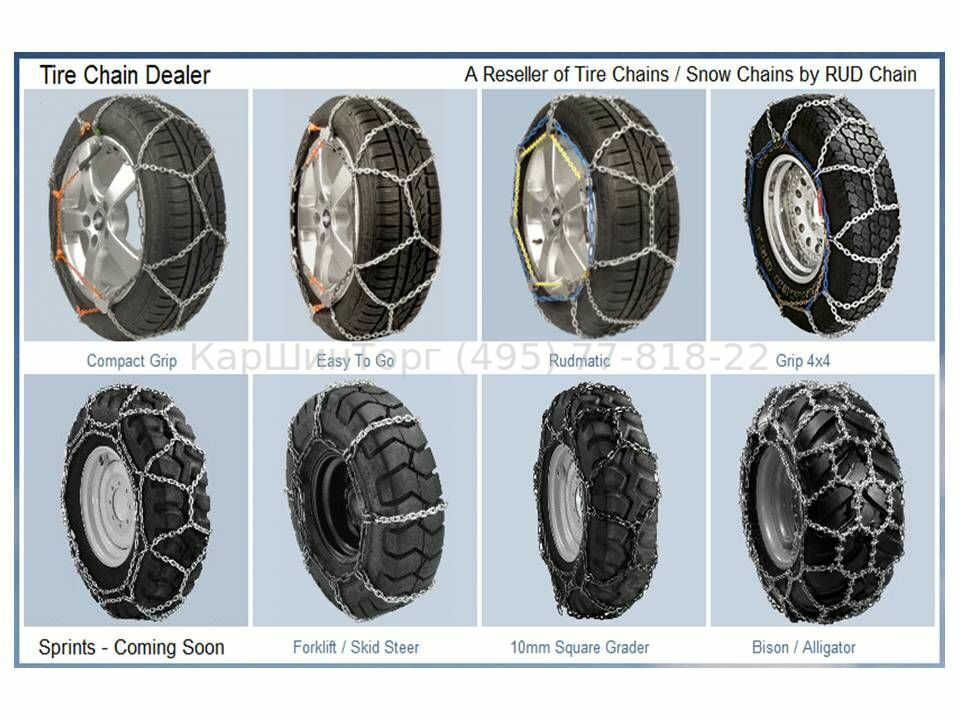 5-25 29.5-29 290/95-34 295/45-20 295/50-16 295/70-17 295/70-22.5 295/75-16 295/75-22.5 295/75-24.5 295/80-22.5 29x11-14 29x12-15 29x12.50-15 29x8-15 29x9-14 29x9.50-15 3.40/3.00X5 30.5L-32 300/70-20 300/80-24 305/45-17 305/50-15 305/50-20 305/55-20 305/60-18 305/70-16 305/70-17 305/70-22.5 305/75-24.5 305/85-16 305/85-22.5 30x10-14 30x9.50-15 30x9.50-16 315/45-22.5 315/70-15 315/70-17 315/70-22.5 315/75-15 315/75-16 315/75-22.5 315/75-24.5 315/80-22.5 31x10.50-15 31x10.50-16.5 31x11.50-15 31x11.50-16 31x12.50-16 31x13.5-15 31x15.50-15 320/70-20 320/70-24 320/80-18 320/85-24 320/85-34 320/90-46 325/60-15 325/60-18 325/60-20 325/65-18 325/80-16 32x10-16 32x11.50-15 32x11.50-16 32x12.50-15 32x12.50-16.5 32x9-16 33x10.50x15 33x12.50-15 33x12.50-16.5 33x13.50-15 33x13.50-16 33x14.50-15 33x14x15 33x15.5-16.5 33x9.50-15 340/80-18 340/85-24 340/85-28 345/55-16 345/55-17 34x9.50-15 34x9x16 35.5-32 355/60-20 355/65-18 355/80-20 35x12.5-16 35x12.50-15 35x12.50-16.5 35x12.50-17 35x12.50-20 35x13.50-15 35x13.
5-25 29.5-29 290/95-34 295/45-20 295/50-16 295/70-17 295/70-22.5 295/75-16 295/75-22.5 295/75-24.5 295/80-22.5 29x11-14 29x12-15 29x12.50-15 29x8-15 29x9-14 29x9.50-15 3.40/3.00X5 30.5L-32 300/70-20 300/80-24 305/45-17 305/50-15 305/50-20 305/55-20 305/60-18 305/70-16 305/70-17 305/70-22.5 305/75-24.5 305/85-16 305/85-22.5 30x10-14 30x9.50-15 30x9.50-16 315/45-22.5 315/70-15 315/70-17 315/70-22.5 315/75-15 315/75-16 315/75-22.5 315/75-24.5 315/80-22.5 31x10.50-15 31x10.50-16.5 31x11.50-15 31x11.50-16 31x12.50-16 31x13.5-15 31x15.50-15 320/70-20 320/70-24 320/80-18 320/85-24 320/85-34 320/90-46 325/60-15 325/60-18 325/60-20 325/65-18 325/80-16 32x10-16 32x11.50-15 32x11.50-16 32x12.50-15 32x12.50-16.5 32x9-16 33x10.50x15 33x12.50-15 33x12.50-16.5 33x13.50-15 33x13.50-16 33x14.50-15 33x14x15 33x15.5-16.5 33x9.50-15 340/80-18 340/85-24 340/85-28 345/55-16 345/55-17 34x9.50-15 34x9x16 35.5-32 355/60-20 355/65-18 355/80-20 35x12.5-16 35x12.50-15 35x12.50-16.5 35x12.50-17 35x12.50-20 35x13.50-15 35x13. 50-16 35x14-15 35x14-16 360/70-24 360/80-20 365/60-22.5 365/65-16 36x12.50-15 36x12.50-16.5 36x13x16 36x14-16.5 37x12.50-16.5 37x12.50-17 37x12.50-20 37x12.50x16 37x13.50-17 37x13.50-20 38.5x15-16.5 380/70-24 380/85-24 380/85-28 380/85-30 385/95R24 38x12.50x16.50 38x13x16 38x15.50R16.5 395/85-20 4.00x4.80x8 4.10/3.50x4 4.10/3.50x5 4.10/3.50x6 4.10x3.50x6 400/70-20 400/80-24 400/80-28 405/70-20 40x19-19.5 41x14.00-20 420/70-24 420/70-28 420/70-30 420/80-46 420/85-24 420/90-30 425/65-22.5 43/16.00x20 440/65-24 440/65-28 440/80-24 440/80-28 440/80-30 440/80-34 445/65-19.5 445/65-22.5 445/70-24 44x18.00-20 455/55R22.5 460/65-24 465/65-24 480/65-24 480/65-28 480/70-24 480/80-30 5.00/5.70x8 5.30/4.50x6 550/65-25 555/70-25 6.00-14 6.00-16 6.50-10 6.50-16 6.50-20 6.70-15 600/50-22.5 600/55-26.5 600/65-34 6x12 7-17.5 7.00-12 7.00-14 7.00-15 7.00-15TR 7.00-16 7.00-17 7.00-18 7.00-20 7.2-24 7.50-10 7.50-14 7.50-15 7.50-15TR 7.50-16 7.50-17 7.50-18 7.50-20 700/45-22.5 700/50-26.5 700/50-34 700/55-34 700/70-34 705/70-25 710/45-26. 50-16 35x14-15 35x14-16 360/70-24 360/80-20 365/60-22.5 365/65-16 36x12.50-15 36x12.50-16.5 36x13x16 36x14-16.5 37x12.50-16.5 37x12.50-17 37x12.50-20 37x12.50x16 37x13.50-17 37x13.50-20 38.5x15-16.5 380/70-24 380/85-24 380/85-28 380/85-30 385/95R24 38x12.50x16.50 38x13x16 38x15.50R16.5 395/85-20 4.00x4.80x8 4.10/3.50x4 4.10/3.50x5 4.10/3.50x6 4.10x3.50x6 400/70-20 400/80-24 400/80-28 405/70-20 40x19-19.5 41x14.00-20 420/70-24 420/70-28 420/70-30 420/80-46 420/85-24 420/90-30 425/65-22.5 43/16.00x20 440/65-24 440/65-28 440/80-24 440/80-28 440/80-30 440/80-34 445/65-19.5 445/65-22.5 445/70-24 44x18.00-20 455/55R22.5 460/65-24 465/65-24 480/65-24 480/65-28 480/70-24 480/80-30 5.00/5.70x8 5.30/4.50x6 550/65-25 555/70-25 6.00-14 6.00-16 6.50-10 6.50-16 6.50-20 6.70-15 600/50-22.5 600/55-26.5 600/65-34 6x12 7-17.5 7.00-12 7.00-14 7.00-15 7.00-15TR 7.00-16 7.00-17 7.00-18 7.00-20 7.2-24 7.50-10 7.50-14 7.50-15 7.50-15TR 7.50-16 7.50-17 7.50-18 7.50-20 700/45-22.5 700/50-26.5 700/50-34 700/55-34 700/70-34 705/70-25 710/45-26.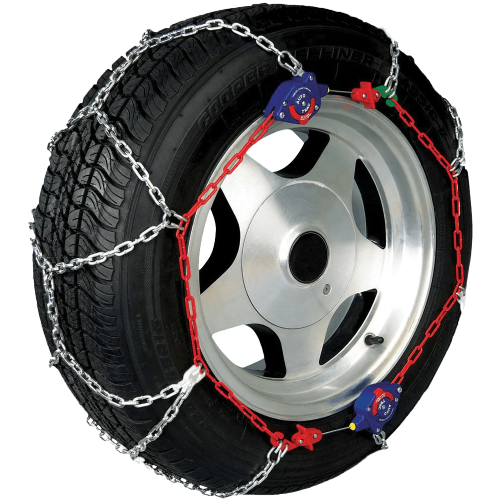 5 710/55-34 73/44.00-32 750/55-26.5 750/65-25 755/70-25 8-17.5 8-19.5 8-22.5 8.00-16.5 8.15x15 8.25-15 8.25-15TR 8.25-20 8.3-24 8.50-17.5 8.75-16.5 8x12 8x15 8x16 9-14.5MH 9-17.5 9-22.5 9.00-15 9.00-15TR 9.00-16 9.00-20 9.5-16 9.5-24 9.5-28 9.5-32 9.5-36 9.5-38 9.50-16.5 FR78-15 GR78-15 H70-14ST H78-14ST H78-15 H78-15ST L78-16 LR78-15 LR78-16 Nov-36 Nov-38 NR78-15 Oct-32 Oct-38 PR78-15 PR78-16 QR78-15 QR78-16 Skidsteer
5 710/55-34 73/44.00-32 750/55-26.5 750/65-25 755/70-25 8-17.5 8-19.5 8-22.5 8.00-16.5 8.15x15 8.25-15 8.25-15TR 8.25-20 8.3-24 8.50-17.5 8.75-16.5 8x12 8x15 8x16 9-14.5MH 9-17.5 9-22.5 9.00-15 9.00-15TR 9.00-16 9.00-20 9.5-16 9.5-24 9.5-28 9.5-32 9.5-36 9.5-38 9.50-16.5 FR78-15 GR78-15 H70-14ST H78-14ST H78-15 H78-15ST L78-16 LR78-15 LR78-16 Nov-36 Nov-38 NR78-15 Oct-32 Oct-38 PR78-15 PR78-16 QR78-15 QR78-16 Skidsteer |
 4-38 12.4-40 12.4-42 12.5-20 12.5-22.5 12.5/80-18 12x12 12x3 12x3.50x6 13.00-24 13.00-25 13.50-16.1 13.6-16 13.6-24 13.6-26 13.6-28 13.6-36 13.6-38 13.9-36 13/80-20 13x4.00-6 13x5x6 13x6.50-6 14-17.5 14-17.5 Skidsteer 14.00-20 14.00-21 14.00-24 14.00-25 14.9-24 14.9-26 14.9-28 14.9-30 14.9-38 14.9-46 14/80-20 14x4.00x6 14x4.50-6 15-19.5 15-22.5 15.5-25 15.5-38 15x5.00-6 15x6.00-6 16.00-20 16.00-21 16.00-24 16.00-25 16.5-22.5 16.9-24 16.9-26 16.9-28 16.9-30 16.9-32 16.9-34 16.9-38 16x4.80x8 16x4.8x8 16x6.50x8 16x7.50-8 17.5-24 17.5-25 17.5L-24 18.4-16.1 18.4-24 18.4-26 18.4-28 18.4-30 18.4-34 18.4-38 18.4-42 18.4-46 185-14 18x6.50x8 18x8.5-10 18x8.50x8 18x9.50x8 19.5L-24 195/75-14 195/75-15 20.5-25 20.8-34 20.8-38 205-15 205-16 205/50-17 205/60-17.5 205/65-16 205/70-16 205/75-14 205/75-16 205/80-12 205/80-14 205/80-15 20x10-9 20x10.00-10 20x10.00-8 20x10x8 20x8.00x10 20x8x8 20x9x8 21.5L-16.1 215-14 215/40-18 215/45-18 215/50-17 215/55-17 215/55-18 215/60-17 215/65-15 215/65-16 215/70-15 215/70-16 215/70-17.
4-38 12.4-40 12.4-42 12.5-20 12.5-22.5 12.5/80-18 12x12 12x3 12x3.50x6 13.00-24 13.00-25 13.50-16.1 13.6-16 13.6-24 13.6-26 13.6-28 13.6-36 13.6-38 13.9-36 13/80-20 13x4.00-6 13x5x6 13x6.50-6 14-17.5 14-17.5 Skidsteer 14.00-20 14.00-21 14.00-24 14.00-25 14.9-24 14.9-26 14.9-28 14.9-30 14.9-38 14.9-46 14/80-20 14x4.00x6 14x4.50-6 15-19.5 15-22.5 15.5-25 15.5-38 15x5.00-6 15x6.00-6 16.00-20 16.00-21 16.00-24 16.00-25 16.5-22.5 16.9-24 16.9-26 16.9-28 16.9-30 16.9-32 16.9-34 16.9-38 16x4.80x8 16x4.8x8 16x6.50x8 16x7.50-8 17.5-24 17.5-25 17.5L-24 18.4-16.1 18.4-24 18.4-26 18.4-28 18.4-30 18.4-34 18.4-38 18.4-42 18.4-46 185-14 18x6.50x8 18x8.5-10 18x8.50x8 18x9.50x8 19.5L-24 195/75-14 195/75-15 20.5-25 20.8-34 20.8-38 205-15 205-16 205/50-17 205/60-17.5 205/65-16 205/70-16 205/75-14 205/75-16 205/80-12 205/80-14 205/80-15 20x10-9 20x10.00-10 20x10.00-8 20x10x8 20x8.00x10 20x8x8 20x9x8 21.5L-16.1 215-14 215/40-18 215/45-18 215/50-17 215/55-17 215/55-18 215/60-17 215/65-15 215/65-16 215/70-15 215/70-16 215/70-17. 5 215/75-14 215/75-15 215/75-17.5 215/80-14 215/80-16 215/85-16 21L-24 21x11.00-8 22.5x10.00-8 220/60-16 220/65-390 225-14 225/35-20 225/40-18 225/45-18 225/45-19 225/55-16 225/55-17 225/55-17.5 225/55-18 225/60-16 225/60-17 225/65-15 225/65-16 225/65-18 225/70-14 225/70-15 225/70-16 225/70-17.5 225/70-19.5 225/70-22.5 225/75-14 225/75-15 225/75-16 225/75-17 22x10-12 22x10-8 22x10x10 22x10x9 22x11.00-8 22x11x10 22x11x8 22x11x9 22x12-8 22x8x11 22x9.00-8 22x9.50-12 23.1-26 23.1-30 23.1-34 23.5-25 23.5x8-11 235/35-19 235/45-17 235/50-17 235/50-18 235/55-16 235/55-17 235/60-15 235/60-17 235/60-18 235/65-17 235/65-18 235/70-14 235/70-15 235/70-16 235/70-17 235/75-15 235/75-16 235/75-17 235/75-17.5 235/80-16 235/80-17 235/80-22.5 235/85-16 23x10-12 23x10.50-12 23x10x10 23x11-10 23x7.50x12 23x8-10 23x8-11 23x8.50-12 23x8.50-14 23x9.50x12 24.5-32 240/45-15 245/35-20 245/40-17 245/40-18 245/45-16 245/45-17 245/50-15 245/50-16 245/50-17 245/55-16 245/55-17 245/60-14 245/65-15 245/65-17 245/70-15 245/70-16 245/70-17 245/70-17.
5 215/75-14 215/75-15 215/75-17.5 215/80-14 215/80-16 215/85-16 21L-24 21x11.00-8 22.5x10.00-8 220/60-16 220/65-390 225-14 225/35-20 225/40-18 225/45-18 225/45-19 225/55-16 225/55-17 225/55-17.5 225/55-18 225/60-16 225/60-17 225/65-15 225/65-16 225/65-18 225/70-14 225/70-15 225/70-16 225/70-17.5 225/70-19.5 225/70-22.5 225/75-14 225/75-15 225/75-16 225/75-17 22x10-12 22x10-8 22x10x10 22x10x9 22x11.00-8 22x11x10 22x11x8 22x11x9 22x12-8 22x8x11 22x9.00-8 22x9.50-12 23.1-26 23.1-30 23.1-34 23.5-25 23.5x8-11 235/35-19 235/45-17 235/50-17 235/50-18 235/55-16 235/55-17 235/60-15 235/60-17 235/60-18 235/65-17 235/65-18 235/70-14 235/70-15 235/70-16 235/70-17 235/75-15 235/75-16 235/75-17 235/75-17.5 235/80-16 235/80-17 235/80-22.5 235/85-16 23x10-12 23x10.50-12 23x10x10 23x11-10 23x7.50x12 23x8-10 23x8-11 23x8.50-12 23x8.50-14 23x9.50x12 24.5-32 240/45-15 245/35-20 245/40-17 245/40-18 245/45-16 245/45-17 245/50-15 245/50-16 245/50-17 245/55-16 245/55-17 245/60-14 245/65-15 245/65-17 245/70-15 245/70-16 245/70-17 245/70-17. 5 245/70-19.5 245/75-15 245/75-16 245/75-17 245/75-22.5 245/85-16 24x10.50-12 24x10x11 24x11-11 24x11.00-12 24x11.5x10 24x11x10 24x11x8 24x11x9 24x12-10 24x12-12 24x13x12 24x13x9 24x8-11 24x8.00-12 24x8.00-14 24x8.50-12 24x8.50-14 24x9.50-12 24x9x11 24x9x12 250-15 255/40-17 255/40-18 255/45-15 255/45-18 255/55-14 255/55-17 255/55-18 255/60-14 255/60-17 255/60-18 255/65-15 255/65-16 255/65-17 255/70-15 255/70-16 255/70-17 255/70-18 255/70-22.5 255/75-15 255/75-16 255/75-17 255/80-22.5 255/85-16 25x10-8 25x10x10 25x10x12 25x11x10 25x11x12 25x11x8 25x12x10 25x12x9 25x13-9 25x13.50-9 25x13.5x12 25x7.50-15 25x8-10 25x8-11 25x8.50-14 25x8x12 26.5-25 26.5-29 265/50-16 265/50-20 265/60-16 265/60-18 265/65-17 265/70-15 265/70-16 265/70-17 265/70-18 265/70-19.5 265/75-15 265/75-16 265/75-22.5 265/80-16 26x10-12 26x10-14 26x10.5x12 26x11-12 26x11-14 26x12-14 26x12.00-12 26x8-12 26x9-12 26x9-14 26x9.5-12 270/60-12 270/95-36 275/45-20 275/55-17 275/55-18 275/55-20 275/60-15 275/60-16 275/60-17 275/60-18 275/60-20 275/60HR17 275/65-16 275/65-17 275/65-18 275/70-16 275/70-17 275/70-18 275/70-22.
5 245/70-19.5 245/75-15 245/75-16 245/75-17 245/75-22.5 245/85-16 24x10.50-12 24x10x11 24x11-11 24x11.00-12 24x11.5x10 24x11x10 24x11x8 24x11x9 24x12-10 24x12-12 24x13x12 24x13x9 24x8-11 24x8.00-12 24x8.00-14 24x8.50-12 24x8.50-14 24x9.50-12 24x9x11 24x9x12 250-15 255/40-17 255/40-18 255/45-15 255/45-18 255/55-14 255/55-17 255/55-18 255/60-14 255/60-17 255/60-18 255/65-15 255/65-16 255/65-17 255/70-15 255/70-16 255/70-17 255/70-18 255/70-22.5 255/75-15 255/75-16 255/75-17 255/80-22.5 255/85-16 25x10-8 25x10x10 25x10x12 25x11x10 25x11x12 25x11x8 25x12x10 25x12x9 25x13-9 25x13.50-9 25x13.5x12 25x7.50-15 25x8-10 25x8-11 25x8.50-14 25x8x12 26.5-25 26.5-29 265/50-16 265/50-20 265/60-16 265/60-18 265/65-17 265/70-15 265/70-16 265/70-17 265/70-18 265/70-19.5 265/75-15 265/75-16 265/75-22.5 265/80-16 26x10-12 26x10-14 26x10.5x12 26x11-12 26x11-14 26x12-14 26x12.00-12 26x8-12 26x9-12 26x9-14 26x9.5-12 270/60-12 270/95-36 275/45-20 275/55-17 275/55-18 275/55-20 275/60-15 275/60-16 275/60-17 275/60-18 275/60-20 275/60HR17 275/65-16 275/65-17 275/65-18 275/70-16 275/70-17 275/70-18 275/70-22. 5 275/80-22.5 275/80-24.5 27x10-14 27x10.50-15 27x10x12 27x11-12 27x11-14 27x12-14 27x12x12 27x8.50-14 27x8.50-15 27x9-12 27x9-14 27x9.50-15 28-Dec 28-Nov 280/85-24 285/40-15 285/45-19 285/50-20 285/60-16 285/60-17 285/60-18 285/65-17 285/65-18 285/70-16 285/70-17 285/70-19.5 285/75-16 285/75-24.5 28L-26 28l26 28x10-14 28x12-15 28x8.50x14 28x9-14 28x9-15 29.5-25 29.5-29 290/95-34 295/45-20 295/50-16 295/70-17 295/70-22.5 295/75-16 295/75-22.5 295/75-24.5 295/80-22.5 29x11-14 29x12-15 29x12.50-15 29x8-15 29x9-14 29x9.50-15 3.40/3.00X5 30.5L-32 300/70-20 300/80-24 305/45-17 305/50-15 305/50-20 305/55-20 305/60-18 305/70-16 305/70-17 305/70-22.5 305/75-24.5 305/85-16 305/85-22.5 30x10-14 30x9.50-15 30x9.50-16 315/45-22.5 315/70-15 315/70-17 315/70-22.5 315/75-15 315/75-16 315/75-22.5 315/75-24.5 315/80-22.5 31x10.50-15 31x10.50-16.5 31x11.50-15 31x11.50-16 31x12.50-16 31x13.5-15 31x15.50-15 320/70-20 320/70-24 320/80-18 320/85-24 320/85-34 320/90-46 325/60-15 325/60-18 325/60-20 325/65-18 325/80-16 32x10-16 32x11.
5 275/80-22.5 275/80-24.5 27x10-14 27x10.50-15 27x10x12 27x11-12 27x11-14 27x12-14 27x12x12 27x8.50-14 27x8.50-15 27x9-12 27x9-14 27x9.50-15 28-Dec 28-Nov 280/85-24 285/40-15 285/45-19 285/50-20 285/60-16 285/60-17 285/60-18 285/65-17 285/65-18 285/70-16 285/70-17 285/70-19.5 285/75-16 285/75-24.5 28L-26 28l26 28x10-14 28x12-15 28x8.50x14 28x9-14 28x9-15 29.5-25 29.5-29 290/95-34 295/45-20 295/50-16 295/70-17 295/70-22.5 295/75-16 295/75-22.5 295/75-24.5 295/80-22.5 29x11-14 29x12-15 29x12.50-15 29x8-15 29x9-14 29x9.50-15 3.40/3.00X5 30.5L-32 300/70-20 300/80-24 305/45-17 305/50-15 305/50-20 305/55-20 305/60-18 305/70-16 305/70-17 305/70-22.5 305/75-24.5 305/85-16 305/85-22.5 30x10-14 30x9.50-15 30x9.50-16 315/45-22.5 315/70-15 315/70-17 315/70-22.5 315/75-15 315/75-16 315/75-22.5 315/75-24.5 315/80-22.5 31x10.50-15 31x10.50-16.5 31x11.50-15 31x11.50-16 31x12.50-16 31x13.5-15 31x15.50-15 320/70-20 320/70-24 320/80-18 320/85-24 320/85-34 320/90-46 325/60-15 325/60-18 325/60-20 325/65-18 325/80-16 32x10-16 32x11.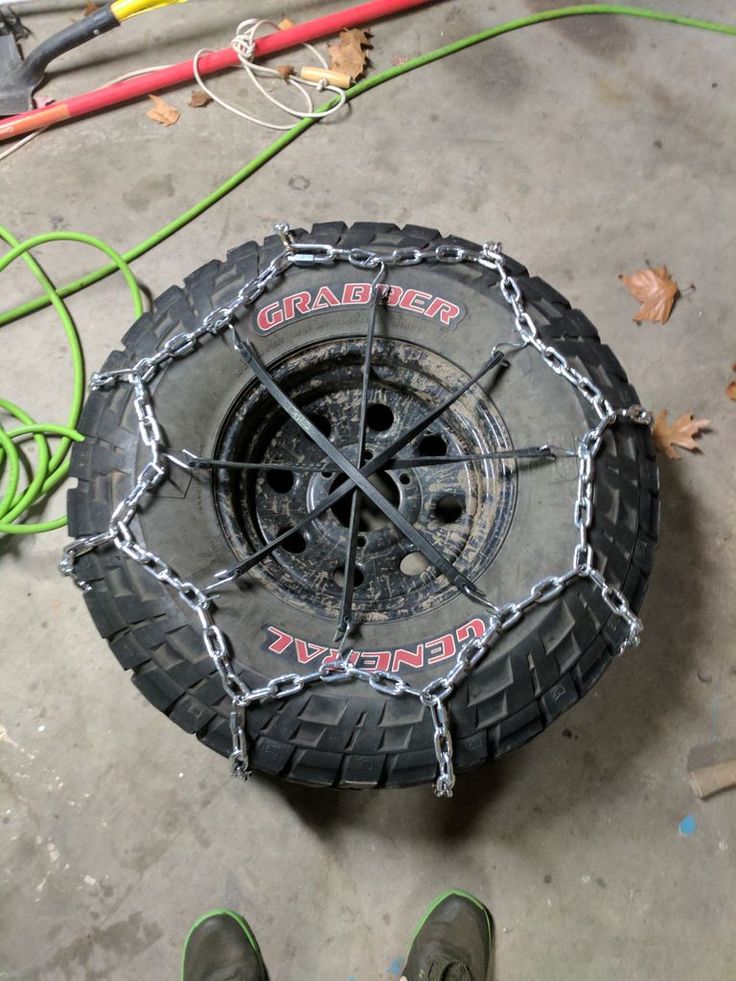 50-15 32x11.50-16 32x12.50-15 32x12.50-16.5 32x9-16 33x10.50x15 33x12.50-15 33x12.50-16.5 33x13.50-15 33x13.50-16 33x14.50-15 33x14x15 33x15.5-16.5 33x9.50-15 340/80-18 340/85-24 340/85-28 345/55-16 345/55-17 34x9.50-15 34x9x16 35.5-32 355/60-20 355/65-18 355/80-20 35x12.5-16 35x12.50-15 35x12.50-16.5 35x12.50-17 35x12.50-20 35x13.50-15 35x13.50-16 35x14-15 35x14-16 360/70-24 360/80-20 365/60-22.5 365/65-16 36x12.50-15 36x12.50-16.5 36x13x16 36x14-16.5 37x12.50-16.5 37x12.50-17 37x12.50-20 37x12.50x16 37x13.50-17 37x13.50-20 38.5x15-16.5 380/70-24 380/85-24 380/85-28 380/85-30 385/95R24 38x12.50x16.50 38x13x16 38x15.50R16.5 395/85-20 4.00x4.80x8 4.10/3.50x4 4.10/3.50x5 4.10/3.50x6 4.10x3.50x6 400/70-20 400/80-24 400/80-28 405/70-20 40x19-19.5 41x14.00-20 420/70-24 420/70-28 420/70-30 420/80-46 420/85-24 420/90-30 425/65-22.5 43/16.00x20 440/65-24 440/65-28 440/80-24 440/80-28 440/80-30 440/80-34 445/65-19.5 445/65-22.5 445/70-24 44x18.00-20 455/55R22.5 460/65-24 465/65-24 480/65-24 480/65-28 480/70-24 480/80-30 5.
50-15 32x11.50-16 32x12.50-15 32x12.50-16.5 32x9-16 33x10.50x15 33x12.50-15 33x12.50-16.5 33x13.50-15 33x13.50-16 33x14.50-15 33x14x15 33x15.5-16.5 33x9.50-15 340/80-18 340/85-24 340/85-28 345/55-16 345/55-17 34x9.50-15 34x9x16 35.5-32 355/60-20 355/65-18 355/80-20 35x12.5-16 35x12.50-15 35x12.50-16.5 35x12.50-17 35x12.50-20 35x13.50-15 35x13.50-16 35x14-15 35x14-16 360/70-24 360/80-20 365/60-22.5 365/65-16 36x12.50-15 36x12.50-16.5 36x13x16 36x14-16.5 37x12.50-16.5 37x12.50-17 37x12.50-20 37x12.50x16 37x13.50-17 37x13.50-20 38.5x15-16.5 380/70-24 380/85-24 380/85-28 380/85-30 385/95R24 38x12.50x16.50 38x13x16 38x15.50R16.5 395/85-20 4.00x4.80x8 4.10/3.50x4 4.10/3.50x5 4.10/3.50x6 4.10x3.50x6 400/70-20 400/80-24 400/80-28 405/70-20 40x19-19.5 41x14.00-20 420/70-24 420/70-28 420/70-30 420/80-46 420/85-24 420/90-30 425/65-22.5 43/16.00x20 440/65-24 440/65-28 440/80-24 440/80-28 440/80-30 440/80-34 445/65-19.5 445/65-22.5 445/70-24 44x18.00-20 455/55R22.5 460/65-24 465/65-24 480/65-24 480/65-28 480/70-24 480/80-30 5.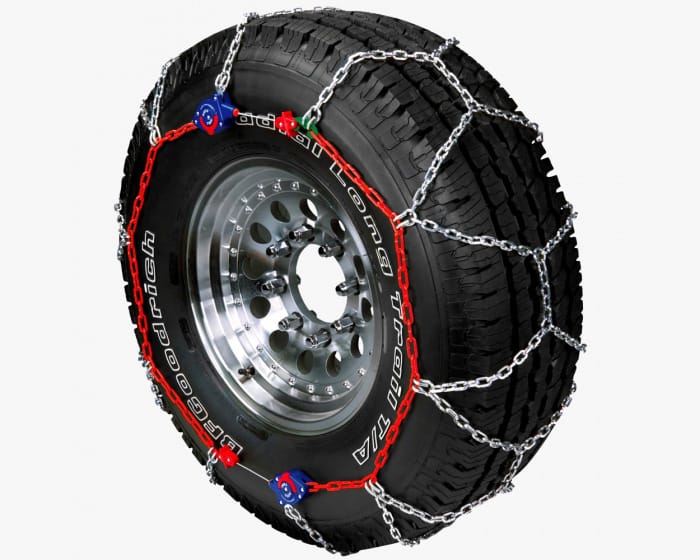 00/5.70x8 5.30/4.50x6 550/65-25 555/70-25 6.00-14 6.00-16 6.50-10 6.50-16 6.50-20 6.70-15 600/50-22.5 600/55-26.5 600/65-34 6x12 7-17.5 7.00-12 7.00-14 7.00-15 7.00-15TR 7.00-16 7.00-17 7.00-18 7.00-20 7.2-24 7.50-10 7.50-14 7.50-15 7.50-15TR 7.50-16 7.50-17 7.50-18 7.50-20 700/45-22.5 700/50-26.5 700/50-34 700/55-34 700/70-34 705/70-25 710/45-26.5 710/55-34 73/44.00-32 750/55-26.5 750/65-25 755/70-25 8-17.5 8-19.5 8-22.5 8.00-16.5 8.15x15 8.25-15 8.25-15TR 8.25-20 8.3-24 8.50-17.5 8.75-16.5 8x12 8x15 8x16 9-14.5MH 9-17.5 9-22.5 9.00-15 9.00-15TR 9.00-16 9.00-20 9.5-16 9.5-24 9.5-28 9.5-32 9.5-36 9.5-38 9.50-16.5 FR78-15 GR78-15 H70-14ST H78-14ST H78-15 H78-15ST L78-16 LR78-15 LR78-16 Nov-36 Nov-38 NR78-15 Oct-32 Oct-38 PR78-15 PR78-16 QR78-15 QR78-16 Skidsteer
00/5.70x8 5.30/4.50x6 550/65-25 555/70-25 6.00-14 6.00-16 6.50-10 6.50-16 6.50-20 6.70-15 600/50-22.5 600/55-26.5 600/65-34 6x12 7-17.5 7.00-12 7.00-14 7.00-15 7.00-15TR 7.00-16 7.00-17 7.00-18 7.00-20 7.2-24 7.50-10 7.50-14 7.50-15 7.50-15TR 7.50-16 7.50-17 7.50-18 7.50-20 700/45-22.5 700/50-26.5 700/50-34 700/55-34 700/70-34 705/70-25 710/45-26.5 710/55-34 73/44.00-32 750/55-26.5 750/65-25 755/70-25 8-17.5 8-19.5 8-22.5 8.00-16.5 8.15x15 8.25-15 8.25-15TR 8.25-20 8.3-24 8.50-17.5 8.75-16.5 8x12 8x15 8x16 9-14.5MH 9-17.5 9-22.5 9.00-15 9.00-15TR 9.00-16 9.00-20 9.5-16 9.5-24 9.5-28 9.5-32 9.5-36 9.5-38 9.50-16.5 FR78-15 GR78-15 H70-14ST H78-14ST H78-15 H78-15ST L78-16 LR78-15 LR78-16 Nov-36 Nov-38 NR78-15 Oct-32 Oct-38 PR78-15 PR78-16 QR78-15 QR78-16 Skidsteer Let’s face it, one of the most confusion things about buying tire chains is figuring out your tire size so you know what size chain to buy.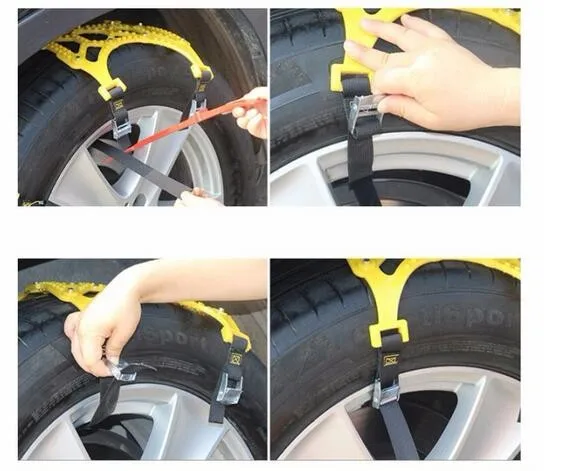
Most tires sold today are sized by the “metric” system. This sizing can be represented with no letter before the size, P-metric, LT-metric and ST-metric. Common examples of this are as follows: 235/75R15, P235/75R15, and LT235/75R15.
In these examples the first set of 3 digits is the width of the tire, measured from sidewall to sidewall, in millimeters, NOT the tread width.
The second group of digits is the “aspect ratio”. The Aspect Ratio is the height of sidewall from the wheel to the top of the tread. The height of the sidewall is a percent of the tire width ...the aspect ratio. In our example, 265/75, the sidewall height is 75% of the 265mm width, or 198mm.
The third set of digits is the rim diameter in inches.
Flotation sizing is used for some cars and truck, and used for small tires such as the ones used on trailers, tractors, and ATVs ie. .. 22x10x10, 18x9.5x8. All of the measurements are in inches. The first number is for the height. The second number is the sidewall width. The last digits are the rim diameter.
.. 22x10x10, 18x9.5x8. All of the measurements are in inches. The first number is for the height. The second number is the sidewall width. The last digits are the rim diameter.
Numeric sizing is used light truck, 205-16, commercial truck, 11-22.5, and agricultural, 9.5-24, applications. The first digits are the width, sidewall to sidewall. The second digits represent the rim size. If your tire size happens to have three sets of numbers, 31x15.50-15, the first number is the height, the second number is the width, and the third number is the rim diameter.
A sturdy set of tire chains is something every vehicle owner should consider carrying along during the winter months.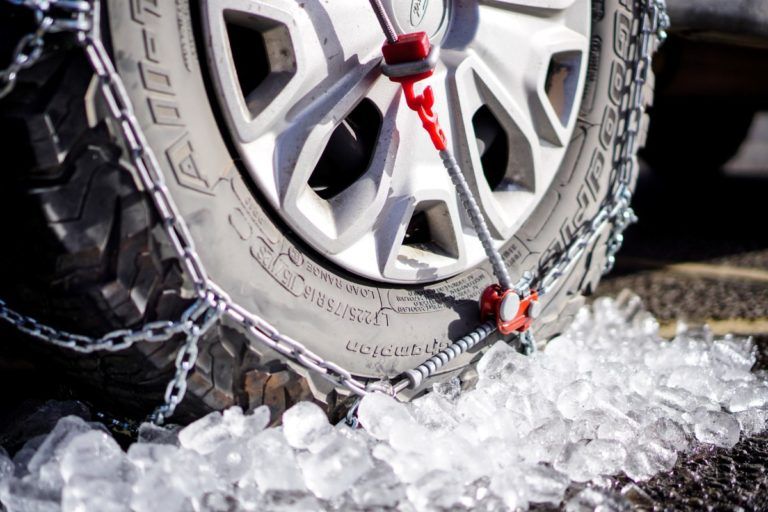 Some states require drivers to have them on hand in case weather makes roads difficult or dangerous for driving. Tire chains bite into heavy snow, slush, and ice to give your rig extra traction and help ensure safe arrival at your destination.
Some states require drivers to have them on hand in case weather makes roads difficult or dangerous for driving. Tire chains bite into heavy snow, slush, and ice to give your rig extra traction and help ensure safe arrival at your destination.
Tire chains are available for many different tire sizes and specific travel needs. Be sure to check your vehicle’s instruction manual for recommendations regarding the use of snow chains.
Know your tire size
One tire chain may fit multiple tire sizes. To figure out your tire size, locate the letter/number combination on the tire’s sidewall. The first three-digit number refers to the tire width in millimeters (measured from one sidewall to the other). The two-digit number immediately after the slash mark is the aspect ratio percentage, calculated by dividing a tire’s height off the rim by its width.
For example, a tire branded with 225/75 has a width of 225 mm, while the tire’s height is 75 percent of its width.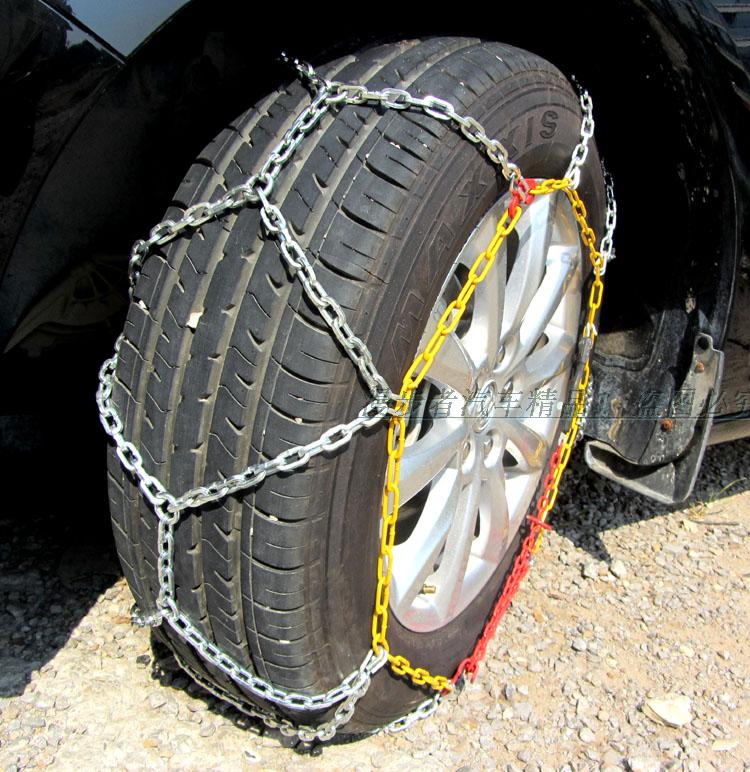
Consider your application
Are you part of the lumber industry or a utility company replacing downed power lines through hills and rough terrain? Or, more commonly, a trucker or highway service worker navigating hard-surface roads and steep mountain passes? Do you have all-season — year-round — radial tires, or those designed for snow/mud?
Snow tire shoulders are squarer and have a different tread than all-weather versions. Therefore, they require a longer chain to cover the added surface area. Also, how often do you plan to mount the chains — after every snowfall or only when necessary? Do you require single chains, or duals?
We offer two styles of snow chains from Pewag, a leader in chain manufacturing. Both meet or exceed DOT and National Association of Chain Manufacturers (NACM) regulations: -
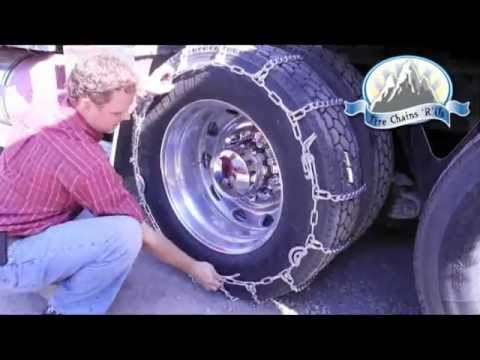 -
-Practice installing beforehand
Don’t wait till you’re in trouble and standing in freezing temperatures to try putting chains on your tires for the first time. Make yourself familiar before you need them by reading mounting instructions and attempting an installation on dry ground.
Always pre-fit tire chains before use to ensure correct fit. If possible, “chain up” prior to reaching poor driving conditions. Always pull your car off the road away from traffic, like into a garage or parking lot. Lay the chain on the ground, remove twists or kinks, and check for signs of damage.
If possible, “chain up” prior to reaching poor driving conditions. Always pull your car off the road away from traffic, like into a garage or parking lot. Lay the chain on the ground, remove twists or kinks, and check for signs of damage.
Drape the chain relatively centered over the top of your tire, straightening it out to evenly distribute over both sides of the tire. Drive forward a few feet to expose the rest of the wheel that was previously touching the ground, and secure the chain squarely on the remaining surface.
Depending on the style, tighten as instructed. After moving forward about 100 yards, stop and inspect the chains for correct tension and fit. Re-tension if necessary or if the chain starts to hit the wheel well. However, too much tension can lead to tire damage, wheels spinning, and increased chain wear.
Shop our entire selection of tire chains, or call and talk to one of our sales experts at 866-348-3473. We can find just about any size you need.
About US Cargo Control
Founded in 2005, US Cargo Control is a trusted leader in the cargo control industry, specializing in professional rigging and lifting equipment, trucking and transportation tie downs, and moving supplies.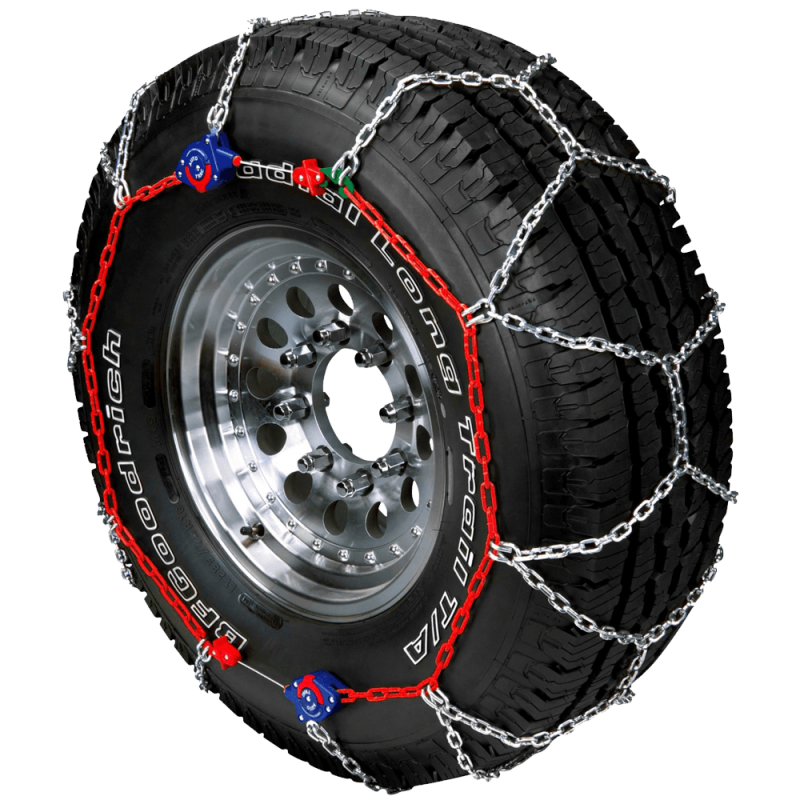 With a superior online shopping experience, industry-experts available via phone, and a central Midwest location, USCC is dedicated to getting you what you want, when you need it. For more information, visit www.uscargocontrol.com
With a superior online shopping experience, industry-experts available via phone, and a central Midwest location, USCC is dedicated to getting you what you want, when you need it. For more information, visit www.uscargocontrol.com
In winter, drivers often have to drive through icy, snowy and other difficult terrain. Without additional equipment to prevent slipping, it is extremely difficult to overcome such sections of the road. Once faced with such difficulties, many motorists begin to investigate the question of how to choose chains for wheels.
The presence of winter and even studded tires is not a guarantee that the car will pass through ice or deep snow. But a car equipped with snow chains is more maneuverable, able to overcome deep snow, mud or sand.
And if in our country car owners somehow manage with studded tires, then in Europe a wheel chain is a necessary element of car equipment, along with a first aid kit and a fire extinguisher. For driving without this equipment on some roads under certain weather conditions, the driver will face a substantial fine.
For driving without this equipment on some roads under certain weather conditions, the driver will face a substantial fine.
Snow chains will also be appreciated by outdoor enthusiasts (hunters, fishermen, skiers), summer residents and anyone who cares about the safety of passengers and seeks to improve driving comfort in difficult conditions.
There are several types of such equipment. To choose the right model, you should understand the differences between them:

Choose the type of equipment based on personal preferences and the tasks that it must solve.
Set usually consists of 2 pieces, matching 10-15 interchangeable sizes. As a rule, if we are talking about infrequent use and not very difficult driving conditions, the equipment is mounted only on the drive axle. An all-wheel drive car is easier to drive if all 4 wheels are “shod”.
Bracelets are another additional protective accessory that improves vehicle flotation. The design is a belt with a buckle for mounting and an anti-slip base.
The driver puts on the bracelets by passing them through the wheel disk. The set includes from 2 to 12 pieces. The more they are worn, the smoother the movement will be. Although they are easier to put on than chains, it will take more time to install several bracelets on one wheel than chains.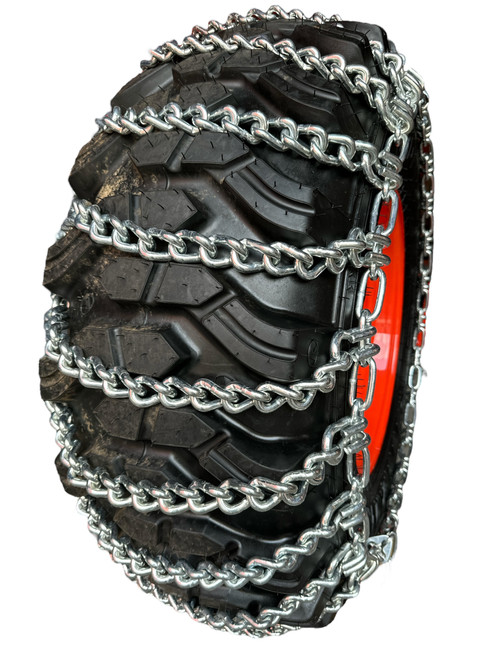
It is not advisable to install bracelets on a steel disc - over time it will gradually cut them.
So, if the wheel is already loaded or the driver wants to get more traction, bracelets will do. Smoother running and better handling are easier to achieve with chains with diamond weave.
Different models of anti-skid equipment differ from each other in a number of characteristics, in particular, the material of manufacture, weaving and link size. The scope of application of structures depends on these parameters. For example, for ice it is recommended to choose a model with small links. The large link is designed to move through mud or deep snow.
It is customary to distinguish two classes of equipment:
 Since the rubber loses elasticity in cold weather, it is difficult to put on the mesh. The maximum permissible speed is not more than 80 km/h.
Since the rubber loses elasticity in cold weather, it is difficult to put on the mesh. The maximum permissible speed is not more than 80 km/h. The life of each product depends on the material and the conditions and intensity of use. For example, soft wheel nets usually wear out within one to two seasons. To extend the life of accessories, you should follow the manufacturer's recommendations for their use.
Grip of the wheels with the ground is achieved by means of a chain mesh with different types of weaving. The most common drawings are "rhombus" (or "honeycomb") and "ladder".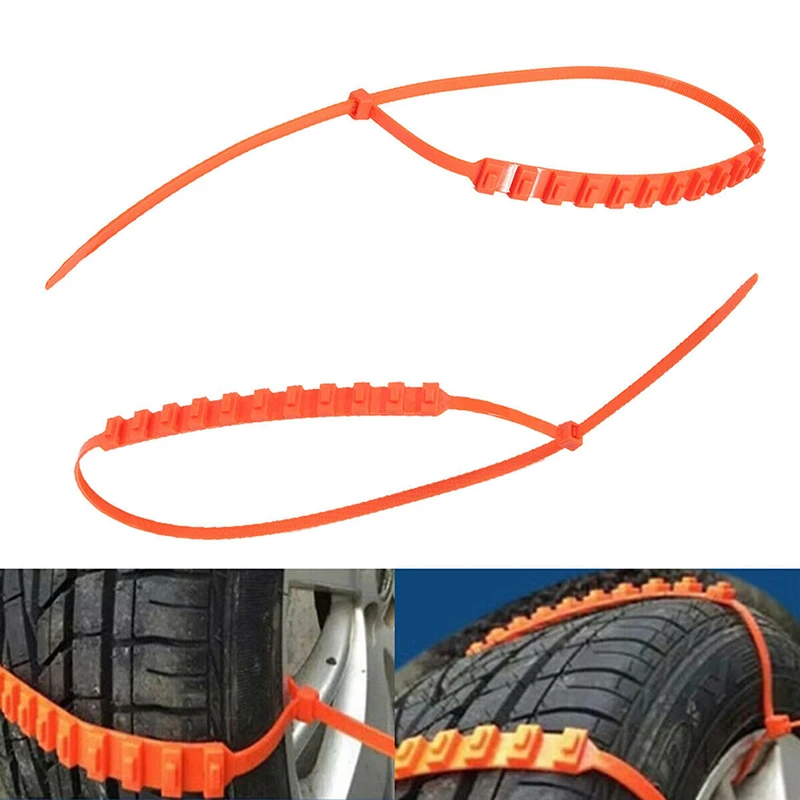
The first option performs well in case of side skids, increases the car's off-road capability without overloading the transmission and suspension. Full repetition of the shape of the wheel guarantees smooth rotation. Suitable for trucks and other large vehicles.
Ladder pattern is convenient in terms of mounting method and provides good traction potential. It is used for rectilinear movement, with side drifts it is less effective. However, jerks during wheel rotation damage the transmission, suspension and steering components. It is because of the jerks that chains with such weaving are usually mounted on non-steered wheels.
Specialists pay attention to the following pattern: the more complex the weaving, the better the machine's cross-country ability.
Chain selection also depends on the link width. On some car models, only fine-mesh chains protruding above the tire surface in the range of 15 mm can be installed. It is desirable to mount 9-12 mm on passenger cars, trucks - from 16 mm.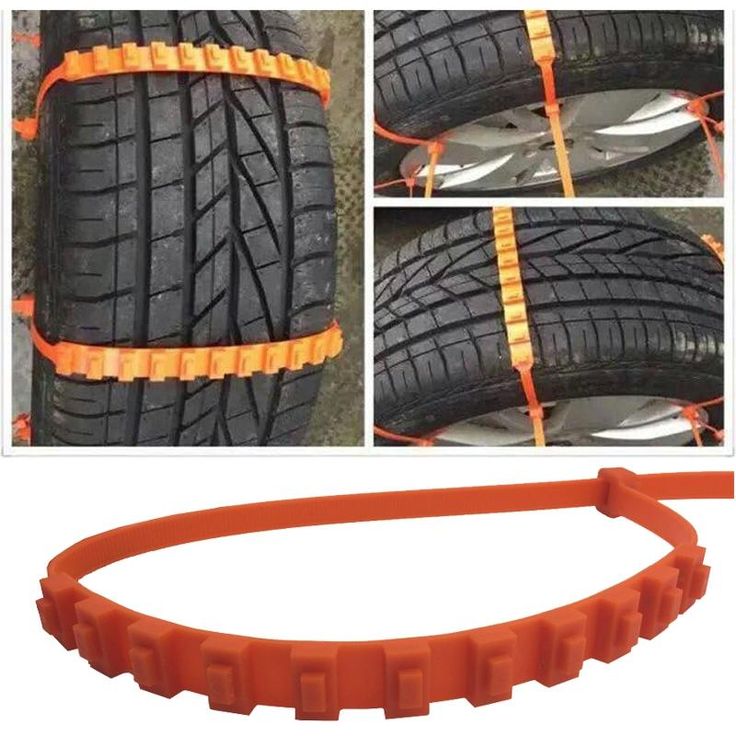
Narrow links perfectly follow the shape of the wheel, although wear faster on a heavy vehicle. Wide ones provide increased cross-country ability of the car, but they wear out the tire treads of a small wheel more strongly.
Before buying chains, there are some disadvantages of this type of equipment. If you use it constantly, you should be prepared for increased noise, as well as stress on the suspension, steering, transmission. Also, many of the minuses include a speed limit.
Before purchasing, please consider the following:
Please note that this equipment is designed exclusively for difficult road sections and not for continuous driving.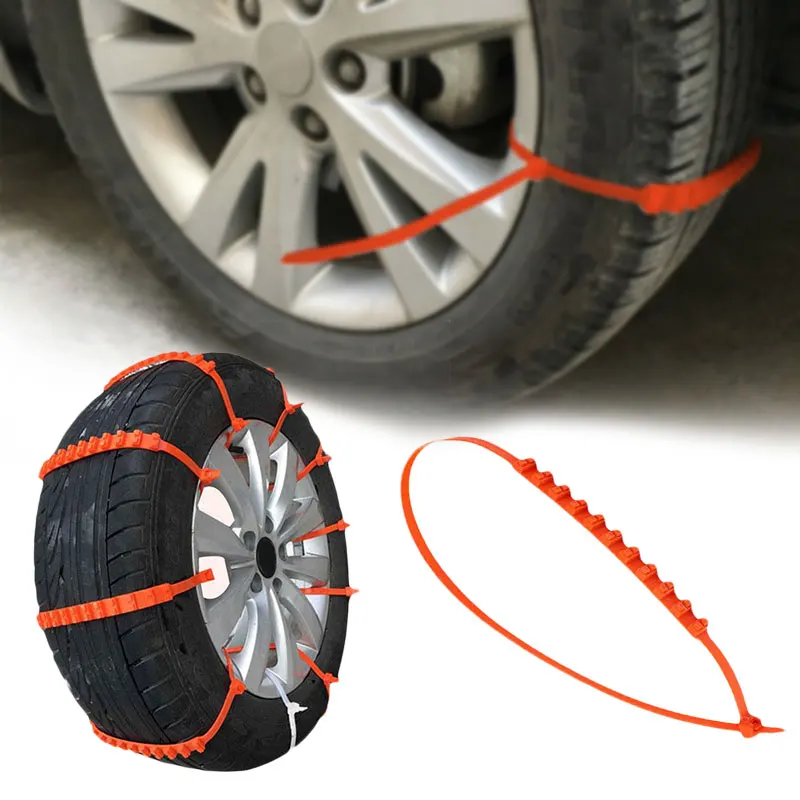
Before fitting the chains, it is advisable to remove the caps and check the tire pressure.
Defects must be repaired immediately, otherwise there is a high risk of damage to the wheel and wheel arch. It is necessary to regularly carefully inspect the locks or choose models with a self-tightening mechanism while driving.
Equipment must be thoroughly cleaned and dried after use to prevent corrosion. Particular attention should be paid to locks. If you purchased the kit without a special case, you can store it in a small plastic box or bucket.
Contents:
Cars sometimes have to deal with difficult road conditions.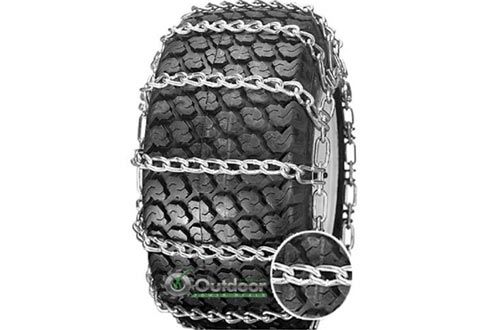 A snowy area, a steep climb, an icy or muddy section of the road - there will be no problems if an SUV collides with this. When it comes to ordinary passenger cars, the situation becomes more complicated with them.
A snowy area, a steep climb, an icy or muddy section of the road - there will be no problems if an SUV collides with this. When it comes to ordinary passenger cars, the situation becomes more complicated with them.
Snow chains are special equipment for the wheels that give the car "off-road" properties. Its main function is to improve road grip. Consider what this equipment is, and also learn how to choose the right snow chains.
An anti-skid chain is a small structure that is put on the wheels to improve the car's patency. Thanks to them, the vehicle moves without skidding on a slippery surface, while during turns and braking it does not lose its trajectory. With the help of a chain, a car will get out of a snowdrift, overcome icy or washed out roads.
Some motorists do not know what this type of equipment is. This is explained by the fact that on Russian roads, many move on studded tires. As for European countries, there snow chains are the same mandatory attribute of a car as a fire extinguisher.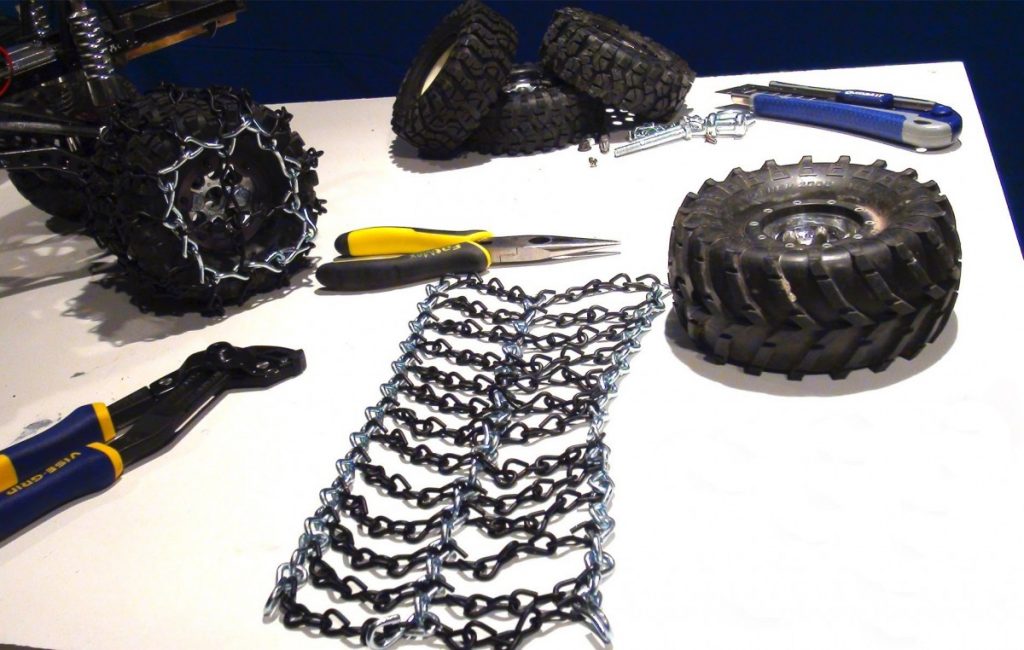
In domestic conditions, a ladder chain is recommended for use on highways. During icy conditions and snowfall, climbing a slope with an inclination angle of more than 12% on studded tires is almost impossible. It is strictly forbidden to drive a car with “hooks” on asphalt, otherwise it will provoke the destruction of the coating. Chains must be stored in the trunk so that in a difficult moment you can use them. This rule should be followed by owners of SUVs and cars.
In 1904, an American named Harry Weed invented the first snow chains. The man created such equipment is not accidental. James Weed, the great-grandson of the creator, told the story that prompted his grandfather to make chains.
One day Harry Weed was driving down the road and saw a man winding ropes and vines around the wheels of his car. In the 20th century, muddy and snowy roads were everywhere, and with the help of ropes and vines, motorists struggled with this. The American tried to invent a similar device and he succeeded.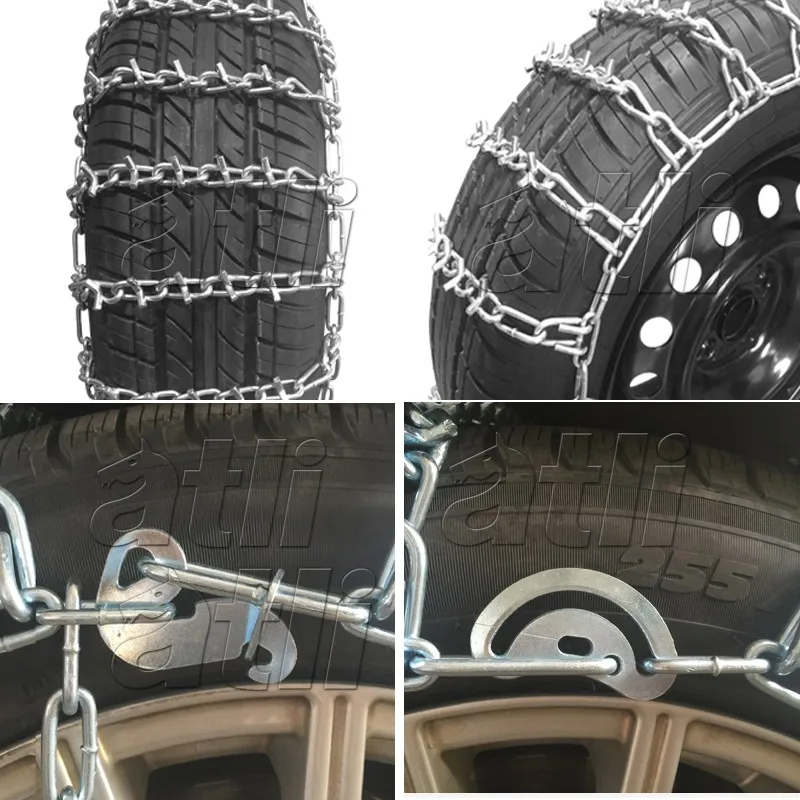 The chains were durable and easy to use.
The chains were durable and easy to use.
There is a second version of the appearance of snow chains. At the beginning of the 20th century, a group of skiers set off to conquer the Swiss Alps. Their transport got stuck in a loose snowdrift in front of the pass. After several unsuccessful attempts to get the car out of the snow, one skier suggested putting a chain around the wheels. The idea really worked. Tourists managed to get out of the snow-covered area.
Anti-slip chains or bracelets (other names for chains) are always sold in pairs in hardware stores.
The principle of operation is that the links create a small contact patch with the road surface. Due to this, the pressure force of the weight of the car on the road surface increases by an order of magnitude. During operation, the chain "bites" into the snow or the ground, working on the principle of the paddles of a paddle steamer.
Drivers who install chains on their vehicles experience a certain relief. However, the car itself, on the contrary, feels an additional load. In any case, it will not be possible to avoid this, but it is possible to minimize the negative consequences. To do this, you must make the right choice of snow chain.
However, the car itself, on the contrary, feels an additional load. In any case, it will not be possible to avoid this, but it is possible to minimize the negative consequences. To do this, you must make the right choice of snow chain.
There are many products on the automotive market that differ in materials and contact surfaces.
Types of chains by materials:
Metal (hard) - classic chains made of galvanized steel. If desired, the driver can order titanium products, but the cost of equipment will be quite high. The size of the links varies from 12 to 18 mm, in rare cases it is 9 mm. The latter are intended for cars with low profile tires. Metal chains are allowed for both passenger cars and heavy trucks.
Rubber (soft) - chains that are installed exclusively on passenger cars. Products are most often operated in the city. Rubber bracelets, compared to metal ones, are better attached to the wheel, surrounding the tread pattern.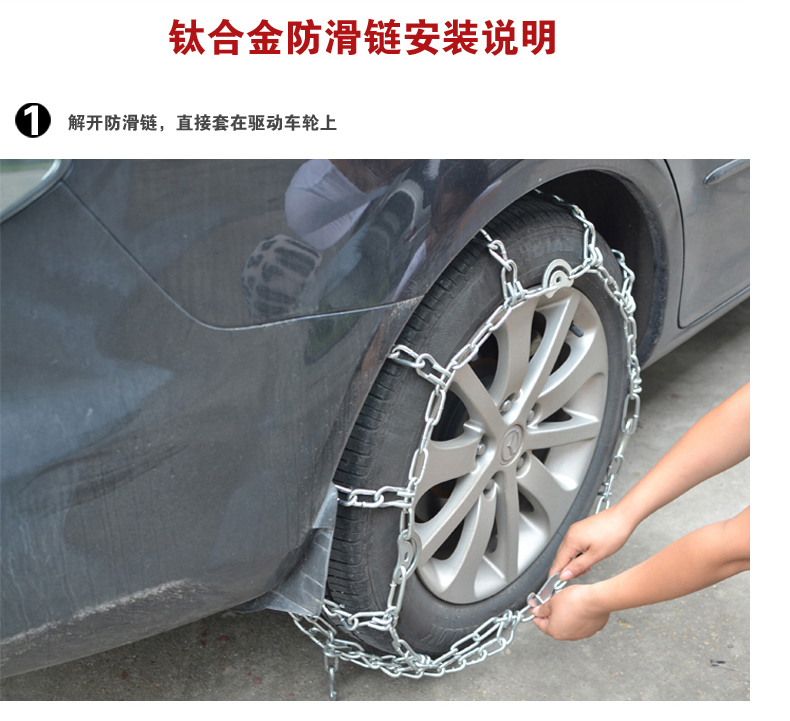
Plastic is a fairly new type of "hook" used for driving on snowy roads. Products do not differ in quality and strength characteristics.
Chains are not only made of different materials, but also available in different sizes. In addition, they are classified "by pattern", each of which has its own characteristics.
Types of bracelets according to the picture:
"Ladder" - a simple option when 2 parallel cables are connected by transverse strips. The equipment has excellent traction, suitable for short driving on bad roads.
"Rhombus" - a bunch of chains is made on the tire tread. It has durability and better handling.
"Honeycomb" - a design that has the effect of interlacing. The pattern is provided due to the fact that the longitudinal cables are additionally combined diagonally.
They show themselves well on snowy and muddy sections of the chain of the Diagonal pattern.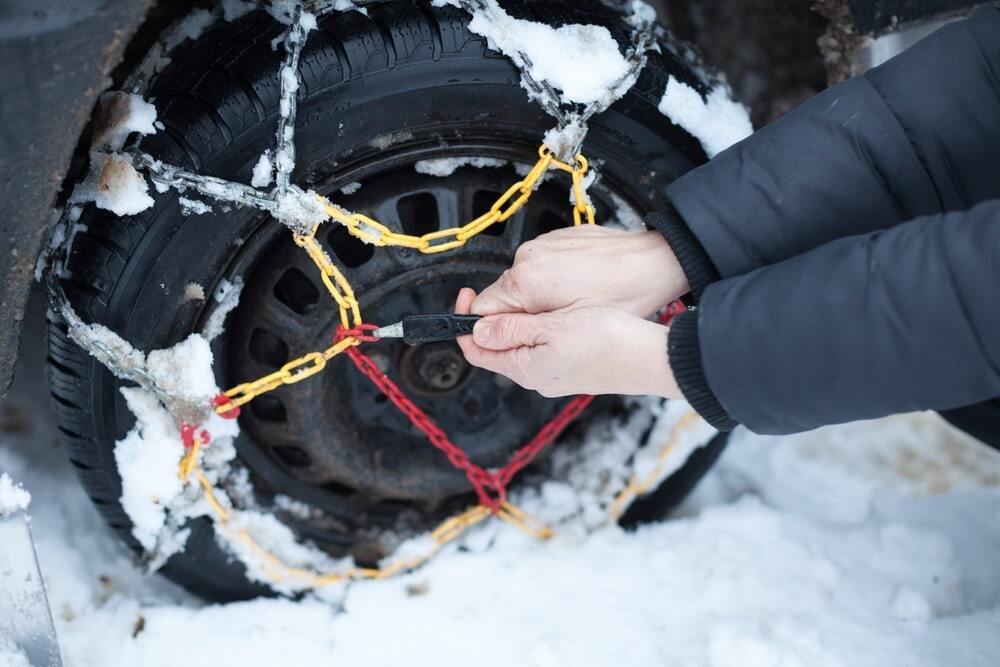 The appearance of the "hooks" is presented in the form of strips that do not intersect with each other.
The appearance of the "hooks" is presented in the form of strips that do not intersect with each other.
Sometimes motorists face the question of what to choose: snow chains or something else? Choosing the best way to increase the cross-country ability of a car, the driver must focus on the pros and cons of one or another option. Consider why chains are good?
Benefits:
Versatility. The equipment is used with great success both in summer and winter. There are no restrictions on their use in the off-season.
Availability. In many countries, steel products are forbidden to be worn on wheels due to their negative effect on the road surface. In Russia, chains are available to everyone. This is the only way to move freely off-road.
Convenience. Due to their small size, bracelets are compact. They can be stored in the trunk, because. they don't take up much space.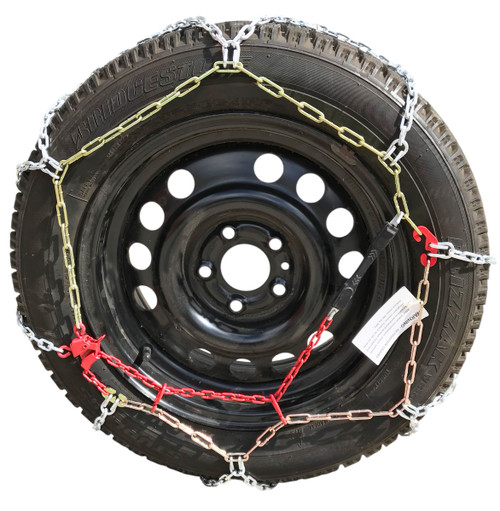
Easy to install. The chains are quite easy to put on and just as easy to take off after a difficult section of the road is left behind.
The product has another important advantage - it can only be used when needed.
It is believed that metal equipment is the best way to prevent accidents on city roads and highways. In addition, the chains help the driver out at unexpected moments. For example, when during a trip out of town it started to rain and the roads were very washed out.
Snow chains are not without drawbacks, which have led to restrictions on their use.
Wear of vehicle parts. When driving with chains, the suspension, steering, rack - all this is subjected to increased loads and leads to rapid wear. In addition, tires suffer greatly, their service life is noticeably reduced.
Speed limit. It is not recommended to move along the highway faster than 40-50 km/h. After the installation of the bracelets, the grip characteristics change, in connection with this there are speed limits.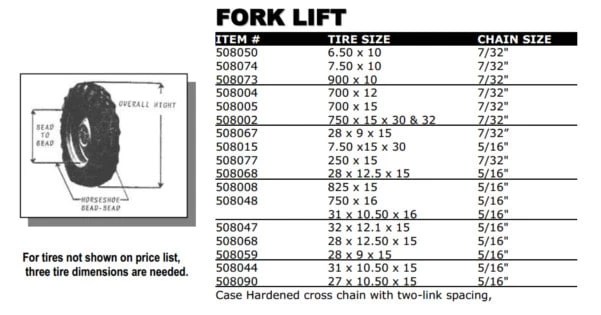
There is a gentle way to increase the patency of a car - to buy rubber or plastic products. However, their off-road properties are somewhat worse than those of metal ones. With these chains, the driver will be able to move along the highway at a speed of 90 km / h.
Installing snow chains on wheels is easy. The main thing in this matter is to follow the instructions.
The installation algorithm involves the following steps:
Expand the chains, remove all formed knots and loops. It is advisable to do this in the trunk. On land, the process will take a little longer.
Park, raise the handbrake and spread the chains. Then throw the products on the wheels so that they cover 3/4 of each tire. After that, you need to make sure that the side sections of the bracelets hang evenly.
Pull the vehicle forward until the remaining 1/4 chains are free. You only need to drive a little, then stop the car and raise the handbrake.
Connect the edges of the products by fastening the hooks on the edges. Repeat the same steps for the outer surfaces of the tires. Using a special link, the driver must tighten the chains.
Make sure that the outer and inner areas are set the same. If one section is loose and the other is too tight, then you will have to distribute the chain more evenly.
Repeat for other wheels.
Drive 500 m after installing the chains to achieve a tighter fit. During the first movement, the chains may loosen and need to be tightened again. After that, they are securely fixed on the wheels.
The snow chains, along with the bracelets, are available as removable treads that improve the running properties of the tyres. What are the differences between these details?
There is an opinion that the driver will need a jack to install the equipment.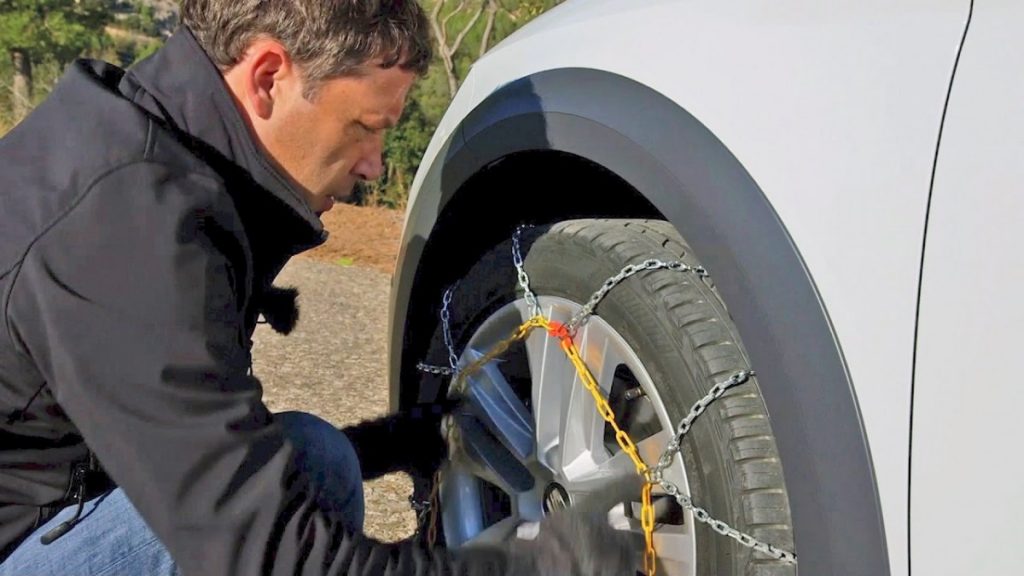 In fact, it will only be needed if the wheels are buried deep in the ground. In other cases, additional gestures are not required.
In fact, it will only be needed if the wheels are buried deep in the ground. In other cases, additional gestures are not required.
Bracelets are easier to put on. However, installing several bracelets on one wheel will take longer than one chain.
Chains are recommended to be mounted on the drive axle. However, if the driver goes on a trip to the mountains, then it is better to put the equipment on all 4 wheels. This rule applies to front wheel drive vehicles.
Thus, the difference between bracelets and chains is insignificant. The only important difference is that the bracelet can be installed even on a loaded wheel.
With the approach of cold weather, which brings with it icy roads, drivers are beginning to choose snow chains. Products are divided into soft (rubber) and hard (steel). The soft ones are equipped with cables, between which rubber anti-slip elements are installed. This is not the case in the second. Also, "hooks" are classified according to the size and shape of the pattern.
Choosing the size of snow chains. Anti-slip equipment is not suitable for all wheels. Some products may damage parts of the brake system while driving. That is why before buying you need to decide on the size of the disk and wheels of the car. For those who are not sure, you should look into the instruction manual. It contains all the necessary information.
When choosing chains, it is important to pay attention to the vehicle class. Despite the fact that the size of the wheels of a passenger car and an SUV may be the same, the cost of equipment for the latter will be an order of magnitude higher. You should not buy chains for jeep wheels that are designed for passenger cars. This method of operation will lead to an increased load on the transmission. For SUVs, bracelets are made with an increased cross-sectional diameter of the chain link. This makes them heavier and able to withstand heavy loads.
Today, snow chains or grouser are made by different manufacturers.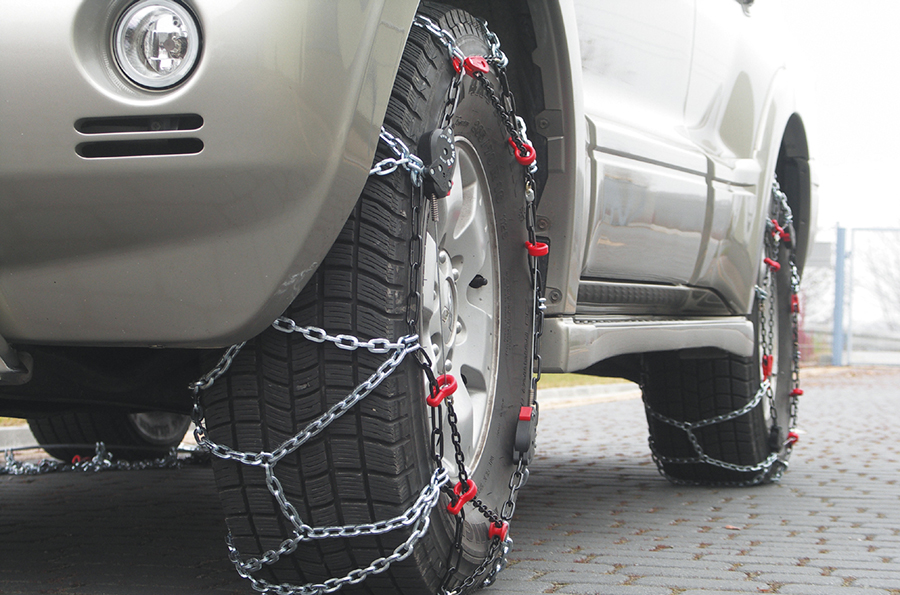 Before buying, we advise you to familiarize yourself with the best models on the market.
Before buying, we advise you to familiarize yourself with the best models on the market.
Konig Zip Ultra snow chains are for passenger cars only. Manufacturer - Italy.
Only 9 mm thick. This allows you to install their wheels with a minimum clearance. The main advantages of this equipment are: long service life, excellent road grip and a high level of vehicle controllability. During testing, the Konig Zip Ultra performed well on a combination of snow and dirt.
CarCommerce 4WD-225/115 snow chains have been developed for use on passenger cars in order to increase their cross-country ability. Snow, mud and ice cover will not stand in their way.
Assembly and disassembly of the products is quite simple. The driver does not need special tools. The procedure will take no more than 15 minutes. The chains are suitable for both front and rear wheel drive.
Thule CB12 are not the cheapest snow chains on the market.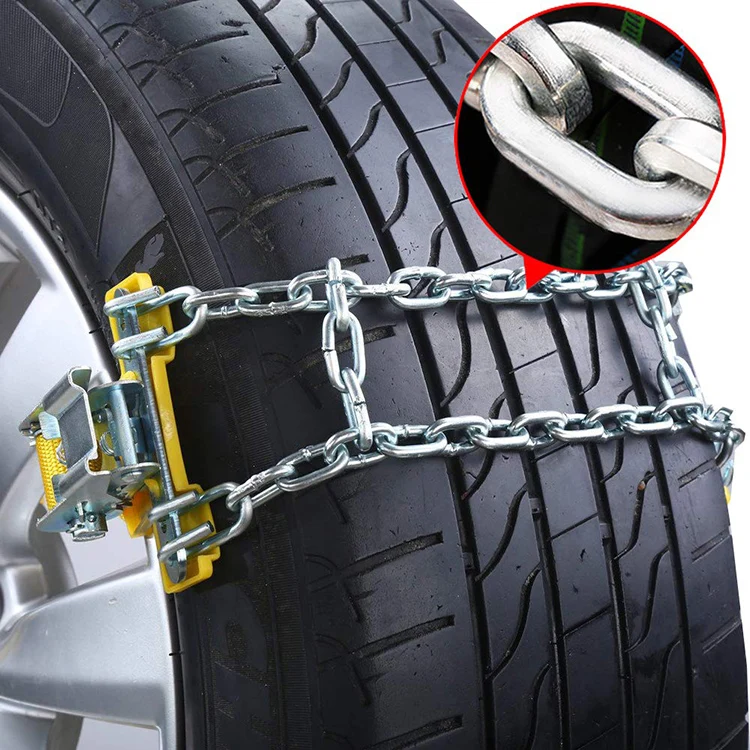 They are designed for passenger cars, have high quality and affordable price. The product is backed by a five-year warranty.
They are designed for passenger cars, have high quality and affordable price. The product is backed by a five-year warranty.
This product has a premium design with fewer links. This feature ensures a smooth and comfortable ride even on clean pavement.
Color coding makes chain installation easy, especially for those who have never done it before. Convex links provide perfect traction and long service life.
Those who live in harsh climates will love the tension mechanism. This system independently regulates and tightens the chains automatically. The rider will not have to suffer from freezing fingers in an attempt to spread the chains in the correct position.
Manufacturer Taurus Diament - Poland. Grousers are designed to equip the wheels of SUVs and minivans.
The products have a thickness of 16 mm, which means they are suitable for all impassable sections on the road. The "diagonal" pattern additionally increases the permeability.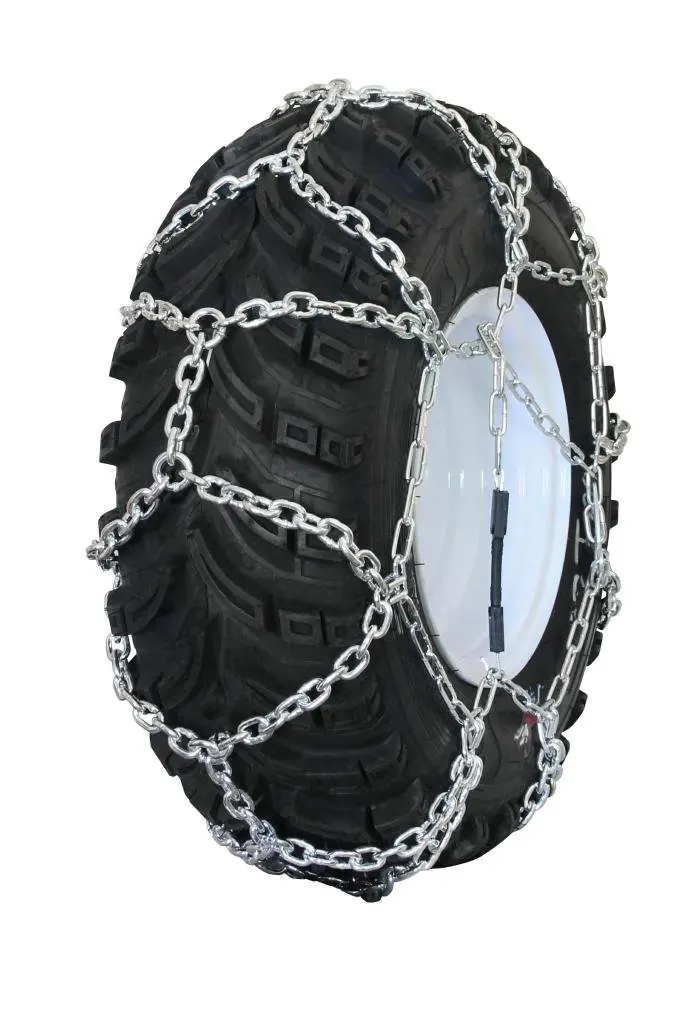 No equipment is required for installation. The only condition is that manual tightening is required.
No equipment is required for installation. The only condition is that manual tightening is required.
All products of the company have passed European certification tests. At the same time, the cost of chains, in comparison with goods from other manufacturers, is relatively low.
Good model for vehicles with little clearance above the caliper. Chains are worn on the side, have a relief of 15 mm.
The layout of the chains is unusual: they are equipped with shaped plates, spikes and cross scrapers. Thanks to them, the product bites into the ice. The design is held by the "spider", which is fixed on the wheel bolts.
PEWAG traction control chains made by an Austrian manufacturer. This product is very popular with drivers for its many advantages.
The main feature of the equipment is that it is not mounted, but very easy to put on. In addition, traction occurs even in heavy mud and in the loosest snow.